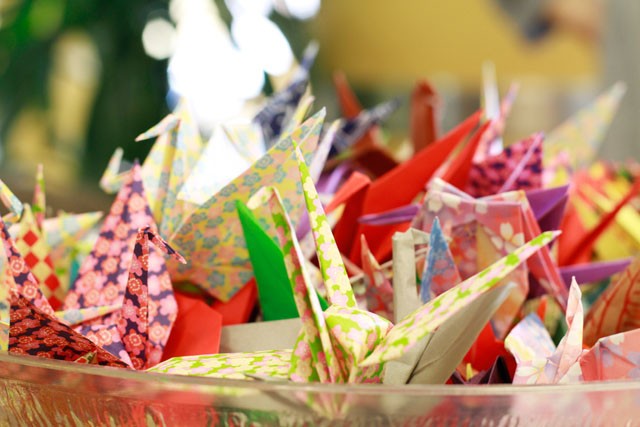A week after the earthquake, tsunami and nuclear crisis battered northern Japan, and three days after University of Minnesota students studying abroad near Tokyo were told to come home, more than half had returned.
Four of the seven students had arrived in the U.S. as of Sunday, but congested air travel out of Japan left an uncertain timeline for the three remaining students, University spokesman Dan Wolter said.
The addition of Japan to the U.S. Department of StateâÄôs travel warning list, unstable transportation systems and the closures of schools in Tokyo where University students were attending prompted the decision to have students leave, Wolter said. There is also the threat of radiation from the damaged Fukushima Daiichi nuclear facilities about 140 miles north of Tokyo.
Eleven students from across the University system were studying in Japan. Four others in Hiroshima and Nagoya âÄìâÄì farther from the northeastern seaboard where the disasters hit hardest âÄî were offered âÄúoptional evacuation,âÄù Wolter said. All opted to remain.
The UniversityâÄôs International Travel Risk Assessment and Advisory Committee makes the call on studentsâÄô departure in crisis circumstances. Students abroad are required to have health and safety insurance, which is used to cover the cost of flying them home.
The University recently evacuated two students from Egypt during the countryâÄôs uprising, and when Mexico was struck with H1N1 virus, students were also required to return, Wolter said. He was not aware of any other evacuation due to a natural disaster.
The studentsâÄô return thus far has been quicker than originally anticipated, as the University was told it would be at least four days before students began arriving in America.
For staff and faculty abroad there is no mandatory reporting on their status. But one College of Education and Human Development faculty member left Tokyo for southern Japan, and Wolter heard two others had returned to the U.S.
âÄúThe situation here is that we just donâÄôt know for sure,âÄù he said. âÄúBut itâÄôs not widespread … weâÄôre not aware of vast amounts of faculty and staff over there.âÄù
Minnesota relief efforts
Back in Minneapolis, members of the Japan Student Association have been working hard over spring break to make more than 500 origami cranes, signs of peace and recovery, to raise money for relief efforts in Japan.
Japan Student Association President Yuusuke Takenokuchi said the group has received many messages pledging prayers and support since the series of calamities hit.
Although TakenokuchiâÄôs parents live in southwestern Japan, away from immediate harm, he is worried about friends whose families live in Fukushima, where radiation from the nuclear plant still threatens inhabitants. His friends have not responded to messages he has left.
As their own form of support, Takenokuchi and other members of the Japan Student Association will be giving away the handmade cranes Tuesday and Thursday on the lower floor of Coffman Union and asking for donations that will most likely go directly to the Japanese Red Cross.
âÄúWe wonâÄôt set the price,âÄù Takenokuchi said, adding that he hopes the University community will respond generously to the crisis.
Similar efforts are forming across Minnesota. Mu Performing Arts, an Asian arts organization in Minneapolis, has been working âÄúfast and furiousâÄù with Loring Theater to put on a relief benefit March 30, MuâÄôs managing director Don Eitel said. The event has a $50 suggested donation that would go toward the American Red Cross fund for Japan.
The arts organization has a number of performers and staff with family or friends in Japan, Eitel said, and is known in part for its Japanese taiko drumming group.
Minnesota corporations began orchestrating their response last week, when General Mills and Wells Fargo announced that theyâÄôd donate at least hundreds of thousands of dollars to the relief effort. Medtronic alone is giving $1 million.

Crews continue to sift through the devastation left in the wake of last week’s tsunami Thursday in the town of Oarai, 70 miles north of Tokyo.
Disasters force U students home
Following Japan’s earthquake, tsunami and nuclear threat, the University has taken the rare step of calling home students studying abroad.
Published March 21, 2011
0
More to Discover







